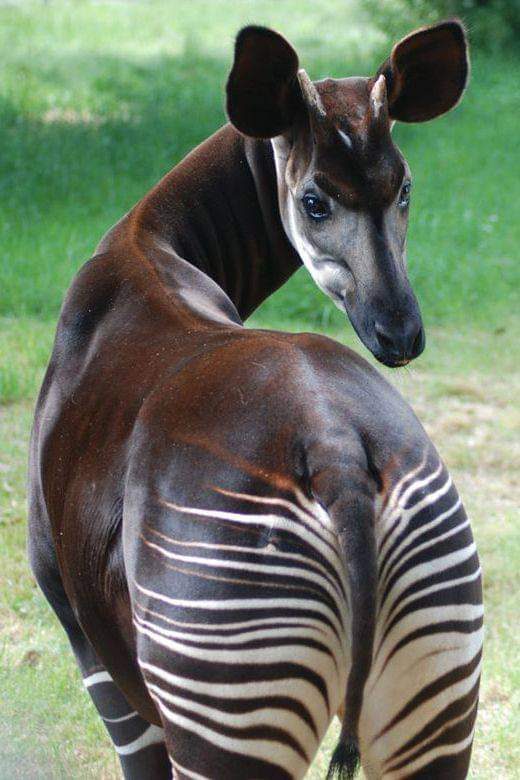
The African okapi, also known as the forest giraffe, Congolese giraffe, or zebra giraffe, is an artiodactyl mammal native to the northeast of the Democratic Republic of the Congo in Central Africa. Although the okapi has striped markings reminiscent of zebras, it is most closely related to the giraffe.
An African Okapi prefers to be alone. They have glands between their hooves that produce a sticky substance that lets other Okapis know this is their territory. Sometimes, though, they do gather in small groups to eat, groom and play.
Female okapis typically have only one calf per pregnancy. An okapi calf is able to walk just 30 minutes after it’s born but can’t defecate until it’s at least a month old—that way, the smell of feces won’t attract predators. While adult okapis don’t vocalize much (except when they’re ready to breed), calves will bleat, cough, and whistle when their mother is away.
African Okapi mothers communicate with their calves by making infrasounds, which are noises that are undetectable to the human ear. Female okapis are very protective of their young and will beat the ground with their hooves to ward off potential threats. However, upon reaching six months of age, a calf must fend for itself.
The rare okapi has an excellent sense of smell and can see very well.
Also known as the forest giraffe, Congolese giraffe, or zebra giraffe, is an artiodactyl mammal native to the northeast of the Democratic Republic of the Congo in Central Africa. Although the okapi has striped markings reminiscent of zebras, it is most closely related to the giraffe. The okapi and the giraffe are the only living members of the family Giraffidae. They are solitary and only come together during breeding times.
The African Okapi is also known as forest giraffe, zebra giraffe or Congolese giraffe. It is native to Congo, central Africa. Though it looks like a crossbred between a deer and a zebra but it is only closely related to the giraffe. It is giraffe’s only living relative and they both belong to the family Girrafidae.
They have thick oily fur to stay dry in the rains. They possess scent glands under the hooves to mark their territory.
The males have short horns but covered in the skin but females only have bumps. Their main predators are leopards but also threatened by humans for their meat and skin.

